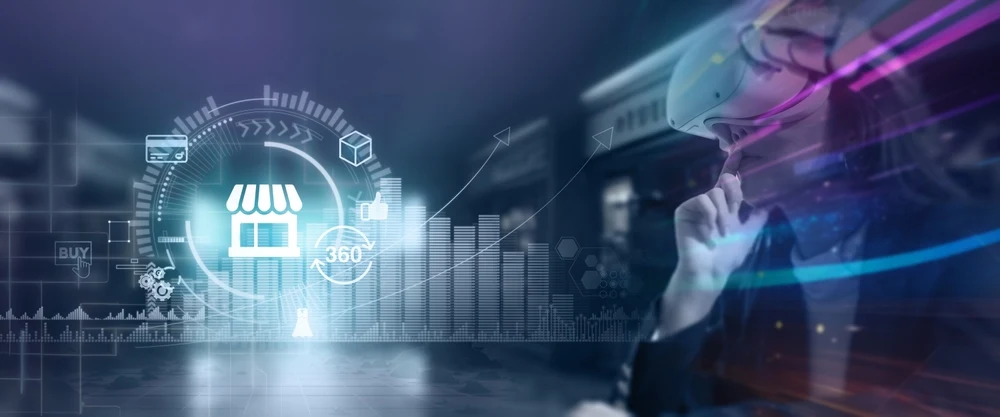
VR is not something new but it is steadily catching up. Its market size is even expected to grow by 2024. With VR already being delebritly used in gaming, it has already made its way to people’s homes. The advertisers has understood the potential VR holds and the way it can benefit advertisers.
VR has also been introduced in affiliate networks where software’s are been used in affiliate marketing programs.
Use of Virtual Reality in Product Demonstrations
The demonstration of a product can make the marketing and
sales efforts more effective. Customer purchasing decision depend on the demo
if the product. And with virtual reality which lets people use the product
virtually is a major decision maker.
It use produce the benefits listed below:
Convenient:
Virtual reality allows the world to operate on remote basis,
still be connected. Usually when a client need to view a product they have to
travel to the product to see it. Even when companies are launching a new product
they have to present a physical model to display but sometimes it’s not
completely ready and its full potential cannot be observed. But with the
introduction of VR this problem has been resolved, anyone can take a look at
the product from the comfort of their homes with the use of VR headset.
Cost-effective:
It is costly to run a company which depends on product
demonstration. This includes the cost of team which needs to be given training
for the demo purposes. The transportation cost of product and the wear and tear
of demo unit. Although if the product demo is given through just the use of
virtual reality it will lower the financial burden of the company
significantly. This is mainly going to benefit the manufacturer of the
sophisticated equipment.
Redefining the term “Try then Buy”
Whenever customer like a product, they prefer reading reviews and even have hands on experience before they think about buying the product. They do it by visiting the shop and have a look at the product to see how looks and works. With the VR demos trial of products has become easier. They get the freedom to virtually experience the product and get detailed information about through VR. With it companies has no reason to worry about inventory loss and customer can experiment with the products in VR.
Massive customer Reach:
Via the VR demos, companies are no longer required to only operate in the domestic markets. They can make use of this technology to help grow their business without adding in tons of funds which are used in physically setting up the company internationally. The only cost which will be required there, would be the training of the new teams which is going to manage operations.
Why to Use of Virtual Reality in Advertising:
VR use in marketing will permit the companies to fill the gap in experience and functionality. The use of VR for providing virtual experience instead of physical. And with the already existing products, VR can be illustrate it development. This can increase the interest of customers on your product and you may get some valuable feedback.
The uses of VR in advertising are given below:
Advertising in Tourism industry:
Yet advertisement have not been able to give the real time experience of the holiday destinations. Although VR have the potential to provide near reality experience. With the use of VR companies can take their customers to the real destinations virtually which can increase sales exponentially.
Bring empathy in ads:
The ads which are created for non-profit organisations sometime miss the mark. Whereas if people can experience through VR what that non-profit organisation is trying to explain then more and more people will be able to connect and relate with them. For example A 20 MINUTE video created by Stanford, it was created to analyse the impact of racism and biasness happening in healthcare environment. And how it is creating micro aggression in workplace.
Smoothly encoded the ads in VR gameplay:
Gaming is where VR is most commonly used, and more and more games are being developed for VR. Brands can partner up with gaming companies to entwine the advertisement in to games. The character can wear branded clothing, accessories or other equipment which promote the brand and bring it to customer’s attention. Such use cases can be easily seen in Fortnite where now even celebrity avatars are being introduced to get viewership. Even live virtual concerts has been held in the game.
Selling product versions as NFTs
Inside the virtual worlds such as Metaverse and others
companies are selling the replicas of their real life products as NFTs. These
NFTs can be owned by anyone and are piece of advertising too. Companies such as
Nike and Coca-Cola have already created NFTs of their products which can be
used in VR.
Conclusion:
This blog is written to define the different use case
cenarios for VR in product demonstrations as well as in advertising. VR is a
great tool used if by brand to stand out in competition. VR is being used in
present and with more and more interest being developed in VR. In the future it
will be used in other industries too.



If you have any doubt related this post, let me know